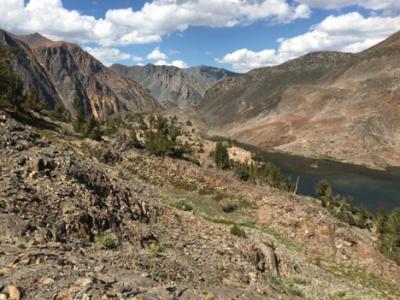Doubling Protected Land Area Globally Could Cause Substantial Regional Shifts in Land Use
Projections of land use and land cover change are highly uncertain, yet drive critical estimates of carbon emissions, climate change, and food and bioenergy production. As part of the Global Change Intersectoral Modeling System project, researchers at Lawrence Berkeley National Laboratory and Pacific Northwest National Laboratory use new, spatially explicit land availability data in conjunction with a model sensitivity analysis to estimate the effects of additional land protection on land use and cover. The land availability data, which includes protected land and agricultural suitability, are incorporated into the Moirai land data system to initialize the Global Change Analysis Model (GCAM). Running scenarios with these new data in GCAM shows the potential land use impacts of increasing protected areas in each region to 30%.
This study advances our understanding of both the methodological and scientific aspects of land use and cover change. Methodologically, it shows the importance of using a current spatial distribution of land availability when projecting land use and land cover. The results demonstrate the importance of modeling groups studying land use change to update their models to utilize similar data. Scientifically, the study analyzes the potential impacts of protecting 30% of land by 2030 on future land use. The results indicate challenges to agriculture and provide an impetus for additional research on this topic, with additional studies building on this work.
This study shows the importance of the spatial distribution of land availability on land use and land cover projections and their dynamic inter-regional interactions. Current amounts of protected area have little effect on land and crop production estimates, but including the spatial distribution of unsuitable (i.e., unavailable for agriculture) land can dramatically affect regional crop production compared to uniform land availability. For example, using spatially explicit availability in this study shifted future bioenergy crop production from high northern latitudes to the rest of the world. In the studied scenarios, approximately doubling the current global protected area to emulate a 30% protected area scenario may avoid land conversion of less than half the newly protected extent, while reducing bioenergy feedstock land by 10.4% and cropland and grazed pasture by over 3% by 2050. Each region requires a different amount of additional protected land to reach 30%. Much unprotected land would still exist, allowing land conversion to continue within a region or to shift to other regions where more land may be available or where something is more profitable. Regional bioenergy land may be reduced (increased) by up to 46% (36%), cropland reduced by up to 61%, pasture reduced by up to 100%, and harvested forest reduced by up to 35%. Only a few regions show notable gains in some undeveloped land types of up to 36%. Half of the regions can meet the 30% level using only unsuitable land. This would minimize impacts to crop production and prices, but may or may not result in lower land use change and emissions.

